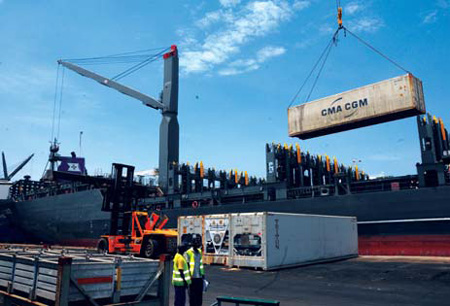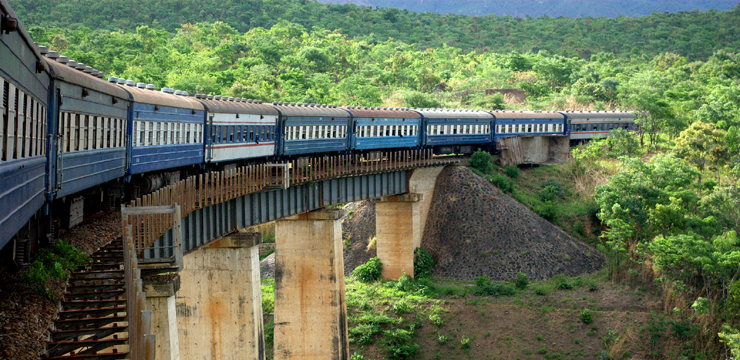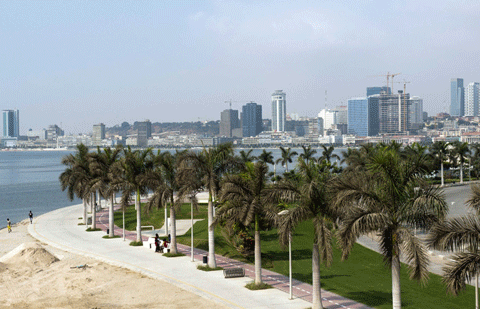A vigorous Angola springs back to life
Updated: 2014-04-29 15:52
(chinadaily.com.cn)
Comments Print Mail Large Medium SmallWell positioned
 |
| Offloading times have already decreased significantly at the port. Photo Provided to China Daily |
Blessed with many manmade and natural advantages, Luanda is not only well placed to serve Angola's needs, but also neighboring countries.
Located in a large, well-protected bay with a deep entrance canal, facilities include an extensive cargo area, additional multi-purpose space and a container terminal.
The port was certified as compliant with the International Ship and Port Facility Security Code in 2004 and has remained certified since.
In July 2010 Venncio unveiled a wide-ranging plan for expansion and development by private sector partners on 20-year concessions, leading to total investments of over $350 million.
A mile of new quayside and two new terminals, including one for the hydrocarbons sector, have been constructed in the past five years. The strategic plan for the next five aims to build on recent successes.
"Our quays need to be adapted with new naval construction technologies," Venncio pointed out. "Investment in rehabilitation has not been limited to one area - we have invested in our entire infrastructure, and because we have to handle almost 50 percent of containerized freight and general cargo, we have also invested in more flexible and efficient equipment."
Improvements have already been made. In December, the chairman announced that the average time to offload and process goods through customs at the port had been slashed from the stupefying figure of 80 days to only 28 days in 2010. This has brought significant savings for shipping companies, importers, and eventually, consumers.
As operations become more streamlined and seamless, the port's chairman is convinced the congestion that plagued Luanda's port in previous years is a thing of the past.
"We have to constantly reinforce the port's mission," Venncio said, "which is to be competitive, efficient and productive, while reducing the transportation costs of imported goods as much as possible."
It is an important message that has been well received by Angola's Chinese trading partners.
Venncio argues that times have changed and that this can be seen across the board.
"There is a completely different reality in 2011 than there was 10 years ago," he said. "Today we are focusing on public-private partnerships as the companies that were awarded concessions are privately owned. We now have to focus on training to manage their activities and the administration of the port authority."
The next challenge is development of Barra do Dande port just north of the capital in neighboring Bengo province.
The 2,400-acre site is being made safe for development by the National Demining Institute, which has already secured 400 acres.
The new port looks set to create strong synergies with the capital's facility, positioning Angola as a major maritime transportation hub for southwest Africa.
The concept of becoming a regional hub is fast gaining relevance and importance as China increases its trade with the region, and particularly Angola.
"China has become Angola's most important trading and economic partner and has also become very involved in the development of our infrastructure," Venncio said.
"We hope this will be a long-term relationship as the benefits can be seen across the country."
With the investment in and the development of the Port of Luanda on track, Chinese companies will equally see the benefits as goods will be cheaper to import and they will get to their destinations much more efficiently.







